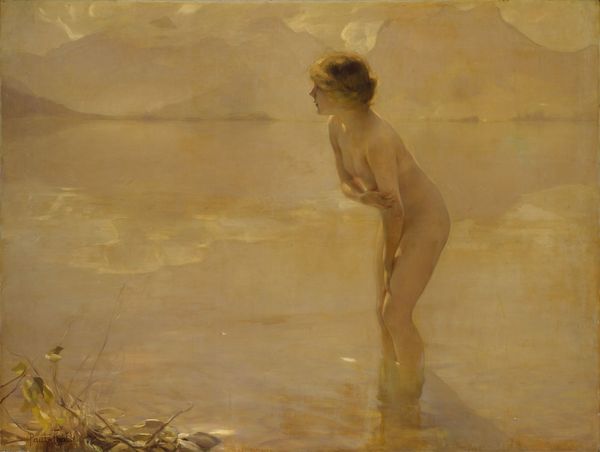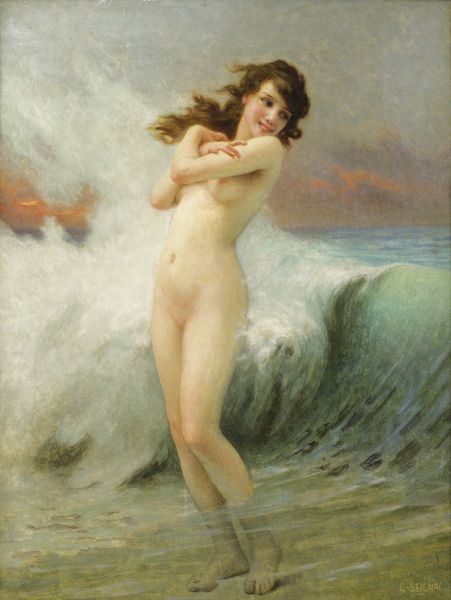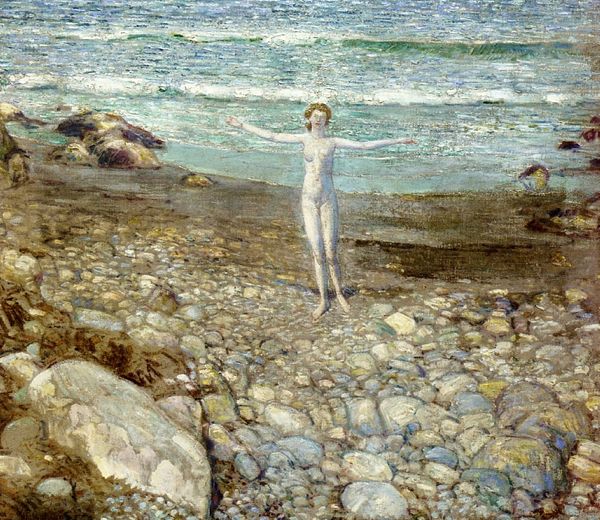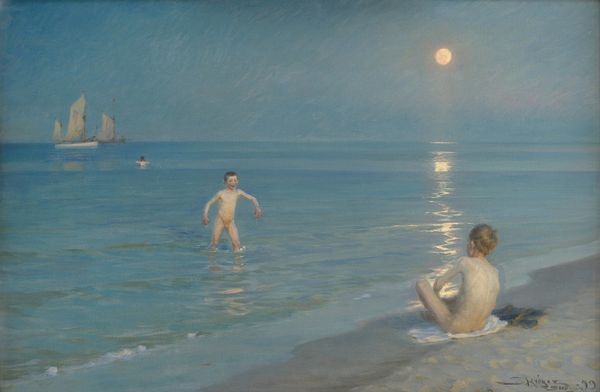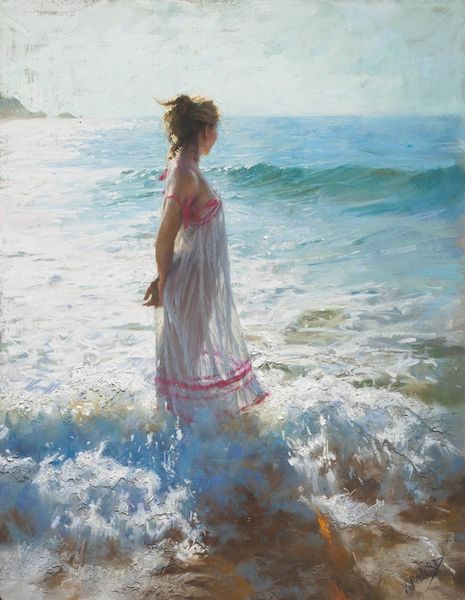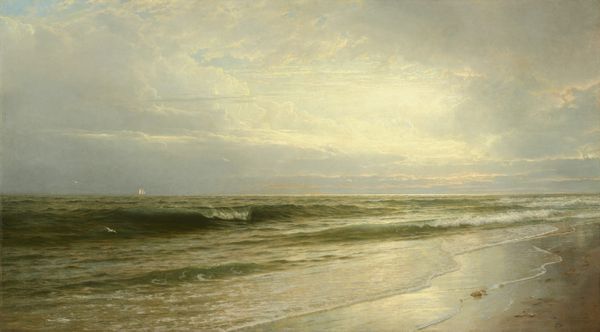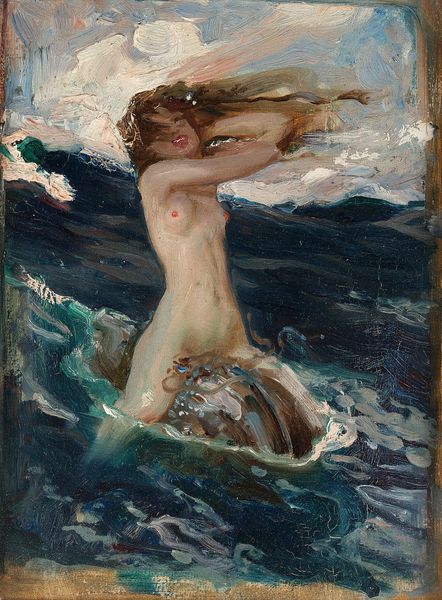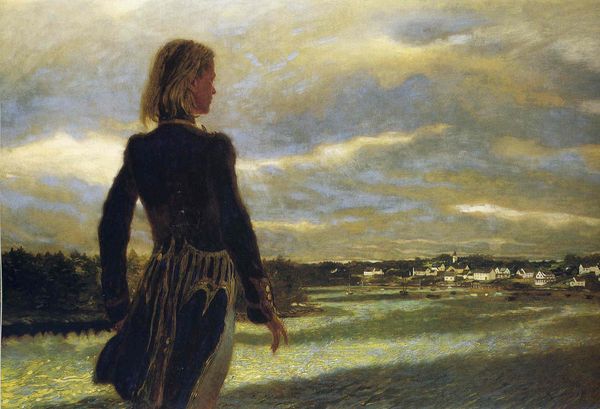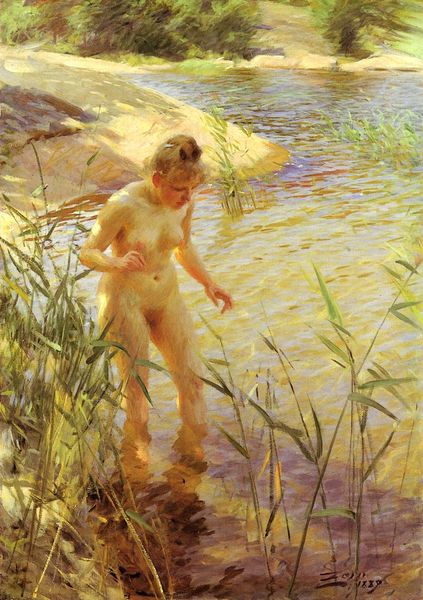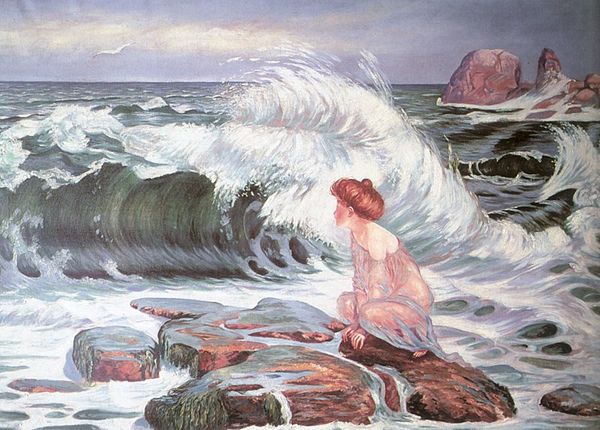
painting, plein-air
#
impressionistic
#
impressionism
#
painting
#
impressionism
#
plein-air
#
landscape
#
neo expressionist
#
nude
Copyright: Public domain
Curator: This painting, titled "The Birth of Venus", presents us with a compelling reimagining of the classical theme. The artist, Pasquale Celommi, sets his Venus not against a bright, crisp Mediterranean backdrop, but against what appears to be a far more turbulent ocean. Editor: My immediate impression is how subdued the colour palette is. The almost monochromatic use of grey, greens and browns, creates a moody atmosphere quite unlike Botticelli's bright and joyous depiction. Curator: Indeed, this muted tonality shifts the symbolic register considerably. The traditional Venus iconography evokes ideas of beauty, love, and fertility; but here, the somber colours and cloudy sky inject a feeling of melancholy or even vulnerability. We might consider that water, classically symbolic of both purification and chaos, perhaps offers insight into the artist's psychological reading of Venus. Editor: I see that too, particularly in the way that Venus emerges—or seems to be wading—from the darker waters, almost tentative. Looking at the composition, she's positioned very much in the center, anchoring our gaze; but that diffused light source behind her adds an ethereal dimension. Note too how softly Celommi models her body—there's a real delicacy of brushwork. Curator: The choice to render her nude, yet set against such a subdued, almost ominous background, further reinforces this sense of vulnerability, I feel. The classical Venus, often presented as confident and powerful, becomes here a symbol of fragility, even impermanence. It encourages us to consider what happens to culturally-powerful female archetypes as artistic visions and societal norms shift over time. Editor: What I find compelling is the intersection between realism and idealization. There's a clear understanding of human anatomy on display; however, the blending of tones and slightly softened focus hints at an abstracted form. This isn’t a clinically perfect body; rather it leans toward a celebration of light, shape, and form within a representational structure. Curator: That blending does also gesture toward those more traditional presentations where Venus emerges in a haze of glory. A softening of definition which is common in artistic renderings of sacred or semi-divine figures across periods. Perhaps not divine and untouchable, as we may think of classic representations of the same theme. More human. Editor: I'm struck by the push and pull between tradition and innovation, melancholy and ethereal light that make for an intriguing and complex artwork. Curator: Absolutely. It encourages us to question easy interpretations, inviting further analysis of not just artistic skill but social values around mythology as well.
Comments
No comments
Be the first to comment and join the conversation on the ultimate creative platform.

